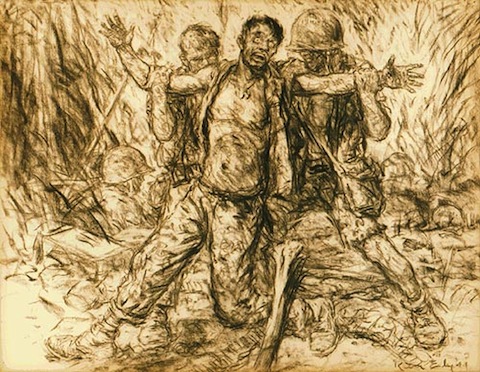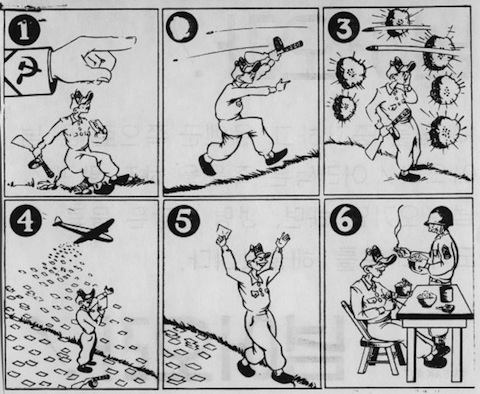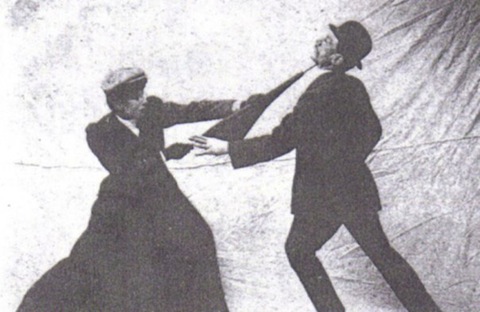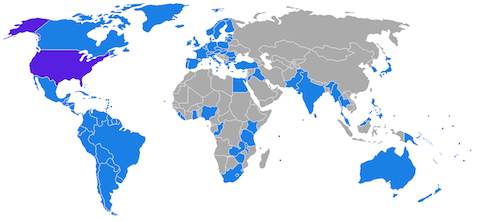
Along with the transmission methods for mass psychological illness, one of the main themes I’ll be exploring in my next book is how traumatized Vietnam veterans coped with their homecomings. As such, I’ve been digging into the history of post-traumatic stress disorder, particularly the ways in which the condition was glossed over by the medical establishment after World War II. Though there’s a good argument to be made that certain aspects of the Vietnam conflict made PTSD unusually pervasive—the evidence for which I’ll be exploring in future posts—it’s folly to assume that hundreds of thousands of World War II vets were never able to reintegrate into American society because of what they’d endured.
One of the threads I’m following is how the media representations of combat affected those depicted, not just the non-fighting folks on the homefront. We all know that the televised images of Vietnam’s carnage helped fuel the American protest movement, but how did this new form of documentation change how vets perceived themselves? That line of inquiry has naturally led me to examine the popular images from World War II, many of which were created by artists’ hands rather than photographers or filmmakers. I’ve previously covered various pen-and-paper chroniclers of era’s military exploits, such as the cartoonist behind Corporal Gee Eye and illustrators who chronicled America’s H-bomb tests. Now I’ve gotten turned onto the haunting work of Kerr Eby, who accompanied the Marines to Bougainville and drew some of the war’s most lasting images of human suffering. The one above has stuck with me for days now: it’s entitled “War is Hell (Shell Shock),” which really tells you all you need to know.
Third-party images play such a fundmental role in shaping our memories, especially as we age. I have to think that World War II vets remembered things different than their counterparts in Vietnam, solely because of the aesthetics of the conflict’s artifacts.
Even if you don’t agree with that assessment, I highly recommend that you check out Eby’s work. And peruse a couple of Robert Benny naval paintings while you’re over there.






















